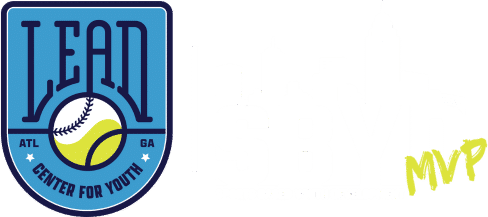My wife, Kelli, and I founded an Atlanta based non-profit organization L.E.A.D., Inc. (Launch, Expose, Advise, Direct) 12 years ago. L.E.A.D. is a sport for social good organization that uses baseball to help at-risk, Black males in Atlanta Public Schools (APS) overcome three curveballs that threaten their success: crime, poverty and racism. Through our methodology, our young men become empowered to find success by embracing their education.
To date, L.E.A.D. has served over 3500 youth in APS grades 6 – 12. Through our partnership with APS, we proudly report the following stats for youth who complete our program: 100% high school graduation rate, 93% college enrollment rate, 90% scholarship rate, 19% college graduation rate and about 14% enter the military or workforce.
The systems we set up at L.E.A.D. to implement our programming need to work so that our young men can achieve the education success they must have to compete in life. We continually assess our programs and the systems we use. When we don’t get the results we need, we find a different way.
Despite our success, why does it feel that we are rolling a ball up hill when it comes to Atlanta’s graduation rate among Black males? Following are a few staggering statistics that I’d like you to share with you:
Based on a 2012 Schott Foundation report – Graduation rates for Black males in Atlanta 2009-10 42% and in Georgia it was 49%.
How is this possible? We know it isn’t a lack of resources and it isn’t lack of goodwill. Georgia has one non-profit charitable organization for every 361 people. It is ranked in the top 1/3 of most charitable states overall. Georgia’s charitable organizations are generous with both their money and volunteers. Could it be that those being served by the non-profit sector would benefit if there were an annual scorecard holding non-profits accountable for who and how they serve? Maybe, but that’s a discussion for another time.
We also know that the State of Georgia has a strategy for serving the educational needs of at-risk youth and systems in place to achieve their goals. So, why does Atlanta have so many problems with poverty and failed educational outcomes for young Black males? I think it’s because some of their systems are ineffective and it’s time to weed them out and replace them with what works.
According to a report issued by the Education Law Center one answer may lie in Georgia’s school funding formula: “Georgia is one of only eight states that provides no additional funding to students in poverty through the state’s school funding formula. Extra funding is, however, made available to districts if students test below grade level on Georgia’s English Language Arts or mathematics tests.”
In an AJC blog post dated August 21, 2019 by Maureen Downey entitled “Researchers say funding is not well targeted to districts with the greatest need” Ms. Downey refers to an Education Law Center report and introduces two researchers from the center, Mary McKillip and Danielle Farrie, to further explain in a guest blog, and advocate on behalf of Georgia’s at-risk student population. Following are outtakes from the blog post, more particularly the Education Law Center Funding Opportunity Fact Sheet that makes the case and provides for a system or funding formula.
According to the ELC Funding Opportunity Fact Sheet:
1. During 2017-18 – 52% of Atlanta Public Schools students live in poverty and 74% of APS students are Black. Based on this and the statistics listed above, one could assume the at-risk population in Atlanta Public Schools includes a high percentage of Black males.
3. How would Atlanta Public Schools benefit if the Quality Basic Education Formula Changed to a an ELC proposed Formula
“It’s time for lawmakers to tackle the challenge of providing additional funding to deliver essential resources to Georgia’s most at-risk students. These students deserve no less. “ Indeed.







